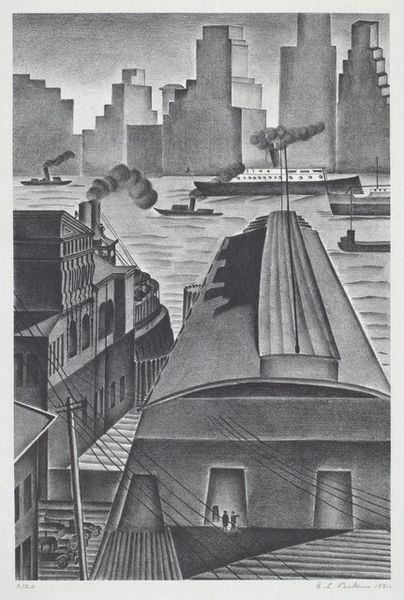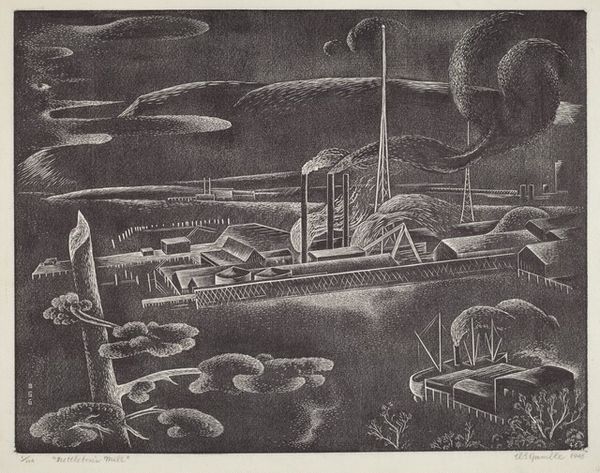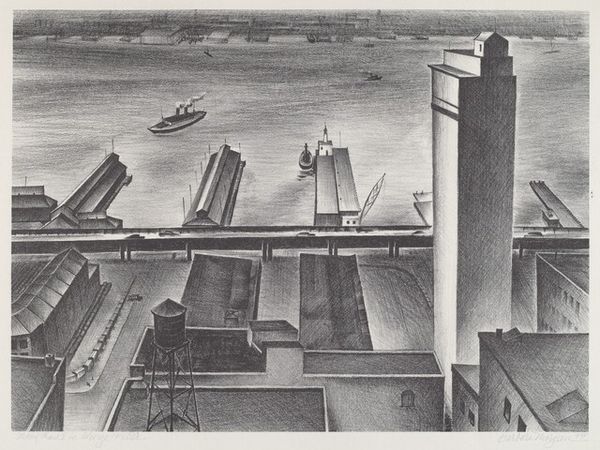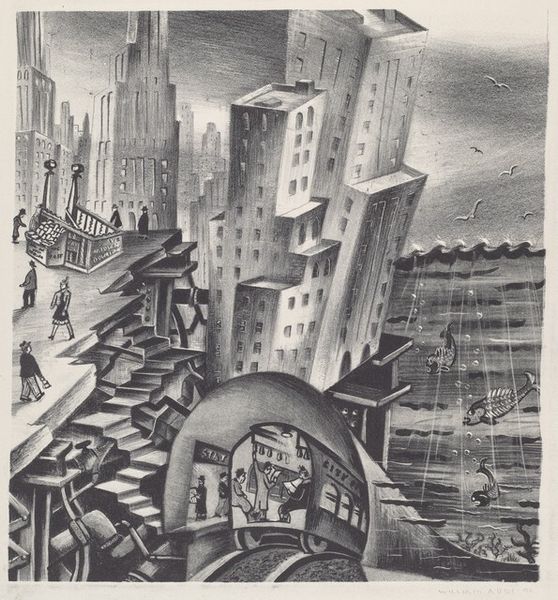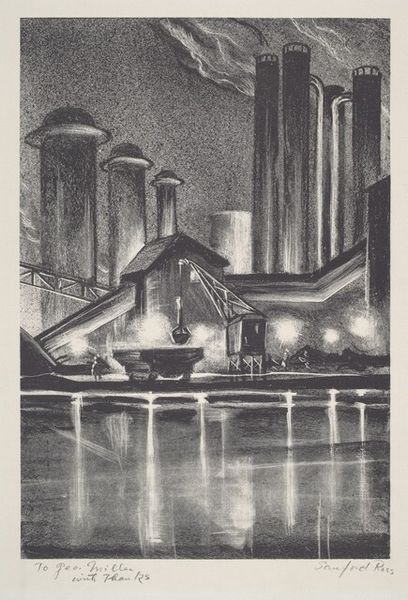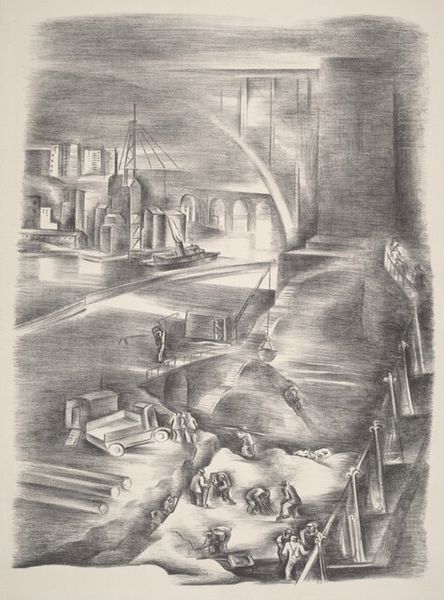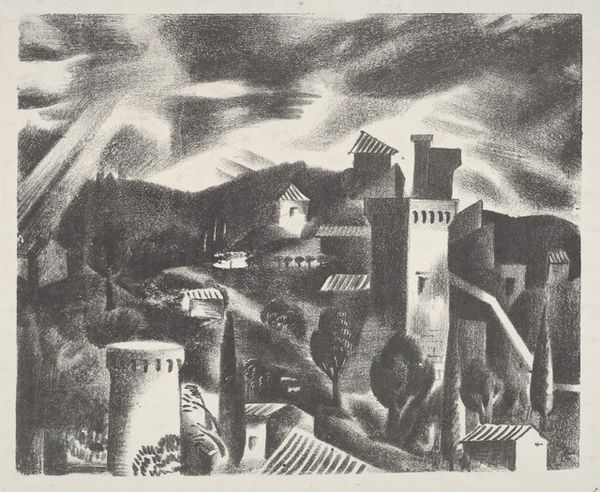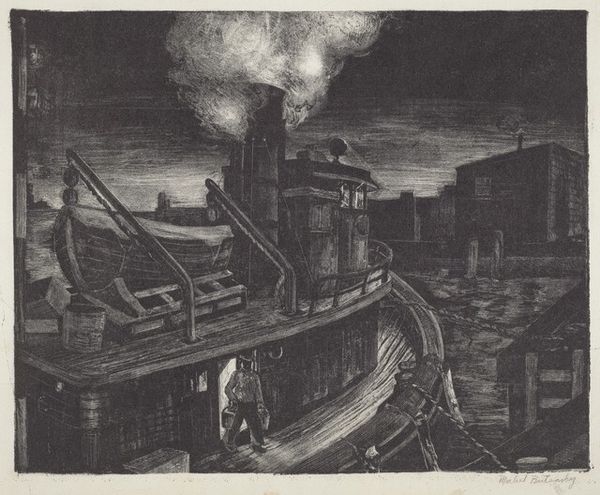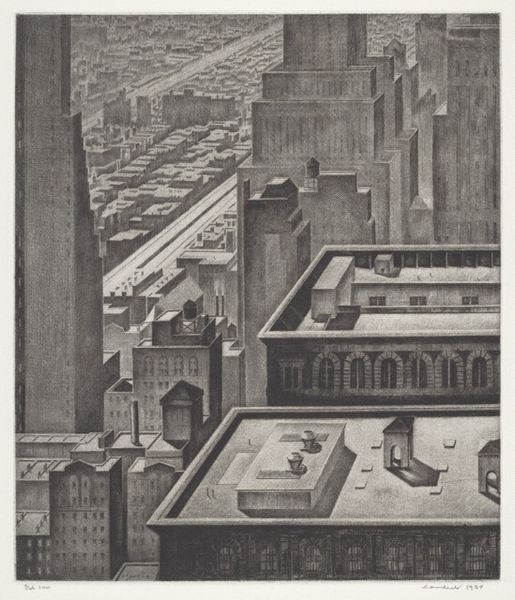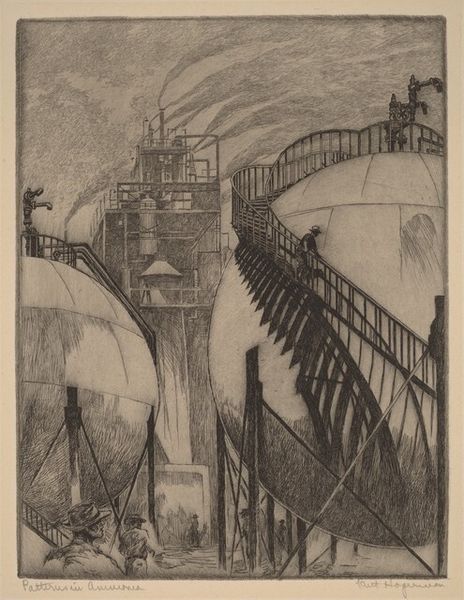
Downtown San Francisco From Montgomery Terrace - Telegraph Hill 1937
0:00
0:00
drawing, print, etching, graphite
#
drawing
# print
#
etching
#
charcoal drawing
#
pencil drawing
#
ashcan-school
#
graphite
#
cityscape
#
realism
#
monochrome
Dimensions: image: 362 x 285 mm sheet: 448 x 371 mm
Copyright: National Gallery of Art: CC0 1.0
Curator: Let's turn our attention to "Downtown San Francisco From Montgomery Terrace - Telegraph Hill," an etching completed by Otis Oldfield in 1937. Editor: It’s got a melancholic feel, wouldn't you say? The density of the graphite mimics the dense urban atmosphere, the heavy smog feels oppressive. Curator: Oldfield was deeply interested in depicting the industrial landscape, focusing intently on the process involved in creating the built environment, which seems particularly visible here. Note how he foregrounds the textures of the street and buildings themselves. The lines almost vibrate. Editor: Right, and that process tells a story. The smoke stacks churning in the background point to production and consumption—the lifeblood, but also the potential self-destruction, of a rapidly modernizing society, a tension embodied here in the built versus the unbuilt. Think of all the manual labour constructing a city during that era. Curator: Precisely. The very materiality speaks to the period of tremendous building projects undertaken in San Francisco during the 30s, particularly connected to the Golden Gate International Exposition. We should observe the contrast with the car – mass production meeting the handmade and aging buildings. Editor: Absolutely. The lone car strikes me as particularly poignant, too, it feels symbolic of the aspirational, yet often unfulfilled promises of the era. Cars afforded freedom to a growing middle class, that didn't apply across the spectrum of race, gender, and class. There’s a real tension. Curator: The way the fog seems to engulf everything reinforces that tension for sure. This etching gives us access to that complicated interwar period, through its methods of making. The density of detail is fascinating in the work and effort evident. Editor: It reminds me that progress isn’t linear or universal. This artwork makes me ponder how societal promises actually play out and what or who is left behind. Curator: Yes, the work shows both the potential and the very real limits of the era's prevailing ideology of modernization and industrial development. Editor: Indeed. A dense picture offering a window into dense times.
Comments
No comments
Be the first to comment and join the conversation on the ultimate creative platform.
